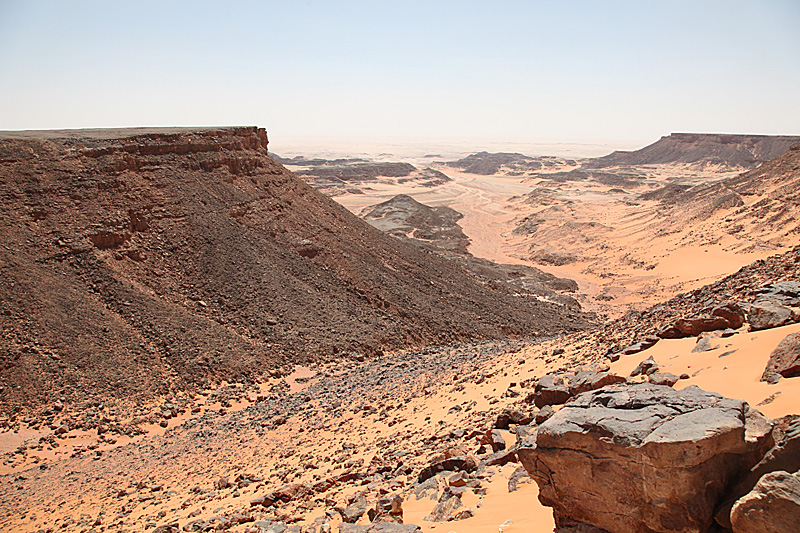
The Enduring Mystery of the Lost City of Zerzura and the 20th Century Race to Find its Treasures
The vast expanse of the African desert has long been a source of intrigue and adventure. Ancient historians told legends of curious tribes amidst the merciless landscape and formidable armies swallowed by the sands. As riveting as these legends may be, none are so captivating as the enigmatic lost city of Zerzura. Known as the “Oasis of Little Birds,” its inhabitants were enchanting, and its treasure, abounding. For centuries, stories had been told of precarious travelers stumbling upon it, but searching the inhospitable desert for its existence would only prove futile. During the early 20th century, as technological advancements brought a renewed interest in the unknown, Zerzura seemed to be the topic on every explorer, archaeologist, and scholar’s tongue. One by one, they took to the sands, in hopes to finally solve this mystery.
Origins of a Legend
In 1481, a disheveled man walked into Benghazi intent on speaking with the emir. Once in his presence, the man, who called himself Hamid Keila, told the emir an extraordinary tale. Some months prior, Keila was traveling with a group through the desert headed for the oases of Dakhla and Khaga, west of the Nile River. Their journey came to a sudden halt as a violent sandstorm erupted. Blinded and unable to breathe, the men slowly began to succumb to the sands. Fortunately, Keila found refuge beneath a dead camel, saving himself from certain death. After the sands subsided, Kiela emerged to find the landscape virtually unrecognizable, and with no other choice, he walked on.
- Exploring the City of Caesars: Patagonia's Legendary Lost City
- The Lost City of Z and the Mysterious Disappearance of Percy Fawcett
Wandering through endless dunes, Keila quickly ran out of resources, growing tired and thirsty. Feeling utterly alone and defeated, he collapsed, ready to face whatever was in store for him. However, in another twist of fate, several men in the distance saw Keila and rushed to his rescue. They helped the poor man and guided him to safety. Though weakened and dazed, Keila noticed these oddly tall men were fair-skinned with striking blue eyes. They carried long swords that ran straight, unlike the curved scimitars commonly used. Eventually, they came to an opening between two mountains, where an ornate bird stood atop an elaborate gate.

The Gilf Kebir Plateau in the westerns deserts of Egypt. (Roland Unger / CC BY-SA 3.0)
Beyond the gate, Keila was astonished at what he saw: lush greenery, refreshing pools, springs, and palm trees towering over luxurious homes that glistened white against the blistering sun. Children played; women and girls bathed in crystal clear waters; this place was flourishing. The people were incredibly kind, treating Keila as one of their own. Their language was unfamiliar to him; it was similar to the Arabic he spoke, but different from any dialect he had ever heard. Their customs were unfamiliar to him as well – the women did not wear Muslim veils and there were no prayers heard or mosques seen. Keila stayed for a little while, enjoying this repose. By his admission, he was free to go at any time; still, he impulsively fled one evening under the cover of darkness.
The emir was quite skeptical upon hearing this bizarre story. He presented Keila with multiple questions, all of which he appeared apprehensive to answer, causing the emir to grow suspicious. Frustrated, the emir ordered his guards to search the man. Rummaging through his robe and belongings, they found an extravagant gold and ruby ring of foreign design. Further questioning about the ring led nowhere, and the emir had enough. Assuming Keila stole this ring from the inhabitants of the oasis, or anyone for that matter, he immediately ordered his guards to take him into the desert to show them where this hidden place was. Unsurprisingly, Keila refused and his hands were cut off for theft. There, out in the unforgiving desert once again, Keila was left to die.
The Book of Hidden Pearls
The Kitāb al-Kanūz, otherwise known as the Book of Hidden Pearls, was an Arabic medieval manuscript that supposedly originated around the 13th to 15th century. Within its pages were hundreds of specific locations to ancient treasures spread across Egypt and the surrounding areas, along with various spells and incantations that may be used to protect against spirits or supernatural beings. The manuscript also referenced Zerzura in great detail, including directions through three valleys and between two mountains, and instructions to ward off the guards, described as black giants (Jinn) wielding enormous swords.

The Jinn King of Tuesday. (Public Domain)




